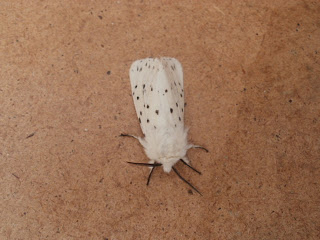Friday, 21 September 2012
Autumn Colours Of Nature
Sunday, 24 June 2012
Parks A Haven For All Kinds Of Wildlife
So many parks sprang up when old tips were bulldozed over and grass and new trees planted ,the ground was too unstable for building houses so new green areas emerged,one such park is the John Smiths Playing Field at Longridge.I remember when the place was a huge tip,Rats and Vermin were common place as were weasels and stoats,i even remember before that when the trains used to run from the stone quarries down to Preston.Nowadays the wildlife has returned with a vengeance as i hope this will show, a great picture to start off was one of a Yellow Tailed Mouse that i got within a foot of,he was enjoying a good feed on some seeds and it was a good job i am not a Owl or it would of been his last supper.
Thursday, 21 June 2012
Our Amazing Beautiful Moths
While you are tucked up in bed as the light fades outside,a whole new generation of Moths prepares to take to the wing,some Moths are day fliers but most emerge as the night sky beckons,many times flying in to a room and going round and round a light bulb,most moth activity can peak on moist humid nights when they will emerge in their thousands.
One of the ways to catch and log the type of moths flying is by use of a moth trap, a device that lets you catch Moths safely by enticing them to a strong light that then lets them slide in to a darkened container waiting to be examined, these darkened areas are usually full of empty egg boxes that keep the moths safe and hidden away.
There are hundreds of species of moths and over the last week here are some that i have captured taken their pictures ,recorded the data then released.
One of the ways to catch and log the type of moths flying is by use of a moth trap, a device that lets you catch Moths safely by enticing them to a strong light that then lets them slide in to a darkened container waiting to be examined, these darkened areas are usually full of empty egg boxes that keep the moths safe and hidden away.
 |
| My Moth Trap in full Glow. |
Our wonderful Bumble bees
As the first warming rays of early sun caress the undergrowth in late February ,early March the first of our Bumble Bees start to emerge from their winter sleep, these are all Queen Bees their large size and slow flight giving them away,some times you will see them crawling slowly on the floor and you might think they are dying but they need some sunshine to gain energy,most of the early flowers they feed on are yellow but exceptions like willow are commonly used as soon as the Queen feds herself she gathers a small amount of nectar and goes looking for a nest site,commonly this will be a old mouse or vole hole, holes in walls and banking's anywhere were she feels safe and warm.
The Queen then lays a few eggs and gathers more nectar to feed herself , she keeps the eggs warm by vibrating her muscles making warmth,these first eggs when they hatch are all female bees or workers,much smaller than the Queen and as soon as they can fly they start to gather nectar,clean the nest and guard the Queen who now her first job done will not leave the nest again .
The Queen then lays a few eggs and gathers more nectar to feed herself , she keeps the eggs warm by vibrating her muscles making warmth,these first eggs when they hatch are all female bees or workers,much smaller than the Queen and as soon as they can fly they start to gather nectar,clean the nest and guard the Queen who now her first job done will not leave the nest again .
 |
| Queen Buff Tail Bumble Bee in the sunshine recharging her body. |
Sunday, 27 May 2012
Salt Marshes and the wonder of Crabs
After a hectic weekend doing a Bio Blitz at Brockholes Nature Reserve,the first really warm day for six weeks gave me the chance to visit a wonderful place,the salt marshes and high tide marks at Cockerham sands.The area around the marshes is a absolutely wonderful natural piece of unspoilt nature,but a word of warning please do not wander too far out on to the mud flats unless you can read the beach, as the sign at the high tide mark gives you a warning why.
Thursday, 10 May 2012
Spring Tides At The Seaside
After a week of really changeable weather and knowing that the big spring tides were happening at the coast i took myself off to the complex of sand dunes and wide open beaches of Lytham St Annes .Spring Tides are caused twice a month at a time when the moon is closest and furthest away from the planet Earth the increase of gravity causes the sea to rise higher thus going out further as well,at Lytham the tide will go out a quarter of a mile further at low tide exposing areas of beach only uncovered maybe twenty times a year,this area is rich in food for sea birds that flock to take advantage,two types of Worms found at the coast are the common Blow Lug Worm,and the much larger Black Lug Worm,the Blow Lug Worm lives in a u shape tunnel its head causing a dimple in the sand were it sucks in sand to obtain food, and a pile of squiggly sand showing where it has expelled the sand after filtering nutrients out.
Subscribe to:
Posts (Atom)






















































